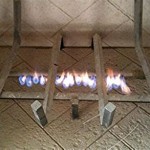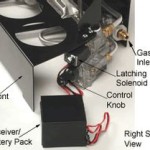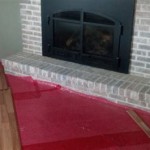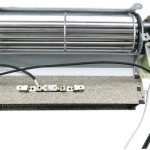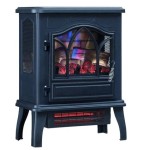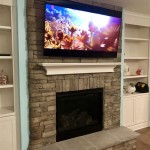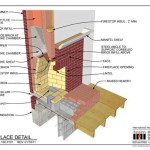Three-Way Fireplace: A Versatile and Architectural Focal Point
A three-way fireplace, also frequently referred to as a peninsula fireplace or a see-through fireplace with an additional open side, offers a unique and visually striking addition to interior spaces. Unlike traditional fireplaces that are situated against a wall, a three-way fireplace provides a panoramic view of the flames from multiple angles, enhancing the ambiance and functionality of connecting rooms. This architectural feature has gained popularity for its ability to act as a natural divider, visual centerpiece, and efficient heat source, offering both aesthetic and practical benefits.
The design of a three-way fireplace inherently provides a more open and inviting atmosphere compared to its conventional counterparts. The exposed flame view transforms the visual dynamics of adjacent spaces, creating a sense of interconnectedness while subtly defining distinct areas. The placement and style of the fireplace can significantly influence the overall architectural harmony of a home, requiring careful consideration during the design and installation phases.
Enhanced Visual Connectivity and Spatial Definition
One of the primary advantages of a three-way fireplace lies in its ability to connect separate living areas. A strategically positioned three-way fireplace can bridge a living room and dining room, a kitchen and family room, or even an indoor and outdoor space. This creates a visual flow, making the spaces feel more unified while maintaining a degree of separation. The transparent nature of the design allows natural light to pass through and enhances the overall spaciousness of the rooms.
Furthermore, a three-way fireplace can serve as a subtle spatial divider without the need for solid walls. In open-concept floor plans, where clear boundaries are often desired without compromising the sense of openness, a three-way fireplace provides a beautiful and functional solution. It visually separates areas while still allowing for interaction and a continuous flow of movement and light. The presence of the flames and the surrounding hearth also create a focal point that anchors the spatial arrangement.
The design possibilities are vast, ranging from modern, minimalist styles to more traditional and rustic designs. The choice of materials, such as stone, brick, or metal, and the overall architectural detailing, can be tailored to complement the existing décor and create a cohesive aesthetic. The transparent firebox also becomes a dynamic art piece, constantly changing with the intensity and movement of the flames.
Efficient Heating and Improved Air Circulation
Beyond its aesthetic appeal, a three-way fireplace can also contribute to efficient heating within a home. While the heat output may vary depending on the specific model and fuel type (gas, wood, or electric), the open design generally allows for better heat distribution across multiple rooms. The radiant heat emitted by the fireplace warms the surrounding areas, reducing reliance on central heating systems and potentially lowering energy consumption.
The effectiveness of heat distribution can be further enhanced through strategic placement. Ideally, the fireplace should be located in a central area of the house, where the heat can naturally circulate throughout the connected spaces. Fan-assisted models can also be employed to actively disperse the warm air, ensuring more even heating and reducing cold spots. However, it's crucial to consider the ventilation requirements and ensure compliance with local building codes to maintain safety and prevent smoke or carbon monoxide buildup.
The choice of fuel type also impacts the heating efficiency and environmental impact. Gas fireplaces offer convenience and ease of use, while wood-burning fireplaces provide a more traditional ambiance and can be a sustainable option if wood is sourced responsibly. Electric fireplaces, on the other hand, offer the greatest ease of installation and operation, although their heating capacity may be lower compared to gas or wood models. Regardless of the chosen fuel type, proper maintenance and regular inspections are essential to ensure safe and efficient operation of the three-way fireplace.
Considerations for Installation and Safety
Installing a three-way fireplace requires careful planning and professional expertise. Due to its unique design and potential impact on the structural integrity of the building, it is crucial to consult with a qualified architect, contractor, and fireplace specialist. Building codes and regulations regarding fireplace placement, venting, and clearances must be strictly followed to ensure safety and compliance.
The location of the fireplace should be carefully considered, taking into account the existing layout of the house, the desired visual impact, and the proximity to flammable materials. Adequate clearances from walls, ceilings, and furniture are essential to prevent fire hazards. Proper venting is also crucial for expelling combustion gases safely and efficiently. This may involve installing a chimney or flue system that meets specific requirements based on the fuel type and local regulations. Gas fireplaces typically require a direct vent system, while wood-burning fireplaces require a traditional chimney with a liner.
Safety features, such as glass screens, spark arrestors, and carbon monoxide detectors, should be installed and maintained to minimize the risk of fire and carbon monoxide poisoning. Regular inspections and cleaning are also essential to prevent the buildup of creosote or other debris in the chimney or venting system. Furthermore, it is important to educate all household members on the proper operation and maintenance of the fireplace, as well as emergency procedures in case of a fire.
The overall cost of installing a three-way fireplace can vary significantly depending on the size, style, fuel type, and complexity of the installation. While the initial investment may be higher compared to a traditional fireplace, the enhanced aesthetic appeal, spatial benefits, and potential heating efficiency can make it a worthwhile addition to a home. Thorough research and careful planning are essential to ensure a successful and safe installation that enhances the value and enjoyment of the living space.

Three Way Fireplace Ideas Living Room With Home Design
Multi View Scotts Fireplace

Girly Me Via Fireplace Modern Family Rooms Room Design Home
Pier Three Sided Gas Fireplace Heatilator

3 Sided Fireplace Ideas Photos Houzz

Home Fireplace Brick Makeover Design

Nantucket Energy Gas Fireplaces

Heat Glo Foundation Pier Custom Gas Fireplace Energy House

3 Sided Fireplaces In Calgary Hearth Home

Montigo Gas Fireplace H Series Peninsula Hp38df Pfc And Hl38df Direct Vent Multi Sided The Club
Related Posts

